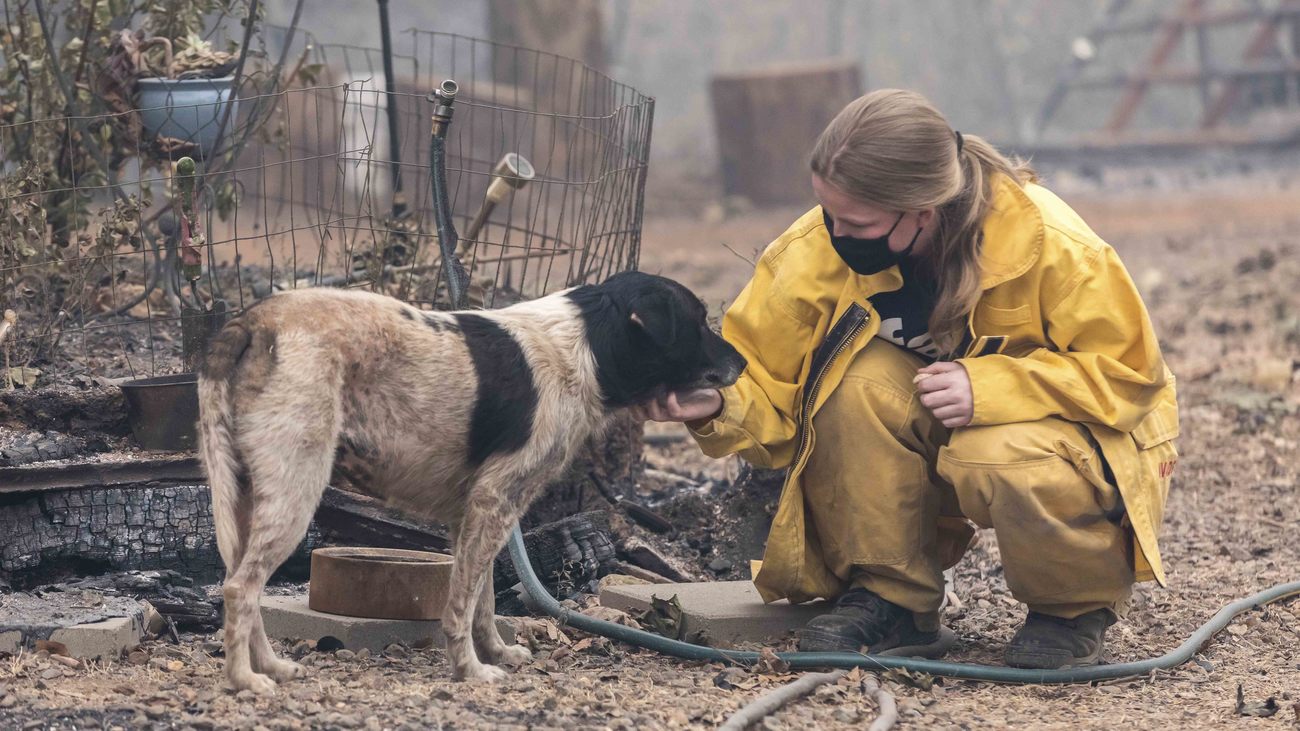Rescuing animals during disasters - United States
In a disaster, animals can’t ask for helpNational Preparedness Month: create an emergency plan that includes your pets
National Preparedness Month: create an emergency plan that includes your pets

Hurricanes and wildfires continue to ravage the country, displacing thousands of humans and animals alike. Many of these disasters can occur in a very short period of time, giving those affected much less time to prepare and evacuate. The number of 'billion dollar' natural disasters has nearly doubled over the past quarter century, with climate change exacerbating the rate and magnitude of such catastrophes.
Animals are critical to human society culturally, economically, and psychologically—their safety and wellbeing must be a key consideration in disaster response planning at all levels of community and government in the United States. According to Shannon Walatjys, IFAW Program Director for Disaster Response and Risk Reduction, “Whether through rehabilitating injured animals, reintroducing wildlife back into its natural environment, or reuniting families with their companion animals, IFAW works to return a sense of normalcy and hope to both human and animal communities that suddenly find themselves in upheaval as a result of a natural disaster.”
National Preparedness Month is recognized each September and aims to raise awareness about the importance of preparing for disasters and emergencies that could strike at any time. In light of the 2021 theme, “Prepare to Protect: preparing for disasters is protecting everyone you love,” IFAW has created a checklist for preparedness for everyone’s favorite furry loved ones: pets.
Create a disaster response plan for your pets
- Write Down a Preparedness Plan with Your Family: Include your pets in the planning—pets are family, too! Identify and list pet-friendly options for shelter: hotels, family or friends’ houses or evacuation centers. Share your plan with neighbors and friends. Designate a friend who can get your pets out if you should happen to be separated from them during a disaster and not allowed back into your community.
- Keep Proper Identification of Your Pets: Invest in a collar with your pet’s name and your contact number, have their vaccination records handy and a photo of you and your pet together. Keep a decal in your home’s door or window indicating the number and types of pets you have. And even better, in addition to a collar and tag, have your pet microchipped and keep their registration updated.
- Prepare an Emergency Go-Bag for Your Pets: Pack an emergency kit or backpack with supplies for at least two weeks that includes ample food, water and treats for your pet. Other items for consideration include a collapsible feeding bowl, towels and blankets for bedding, a few familiar toys, medications and first aid supplies (like bandages, scissors, tweezers and antiseptic cream to treat wounds and burns), vaccination and medical records, an extra leash and collar, a portable litter box (for cats), pee pads and poop bags (for dogs), and a carrier or crate.
- Evacuate with Your Pets: During a disaster, if it is not safe for you, it is not safe for your pets. Never leave a pet behind, chained or caged!
Preparing ahead of time ensures a swifter transition to safe environments during a crisis. You will be grateful you did it and so will your beloved pet.
Related content
every problem has a solution, every solution needs support.
The problems we face are urgent, complicated, and resistant to change. Real solutions demand creativity, hard work, and involvement from people like you.